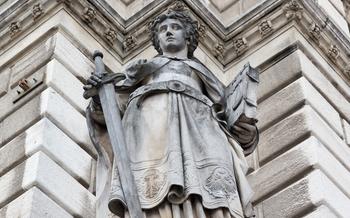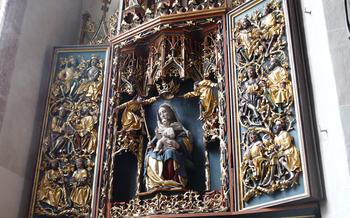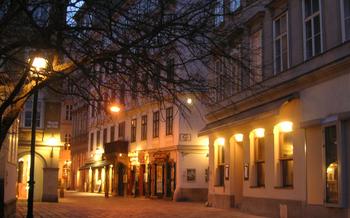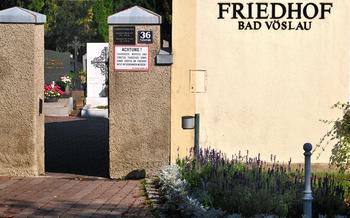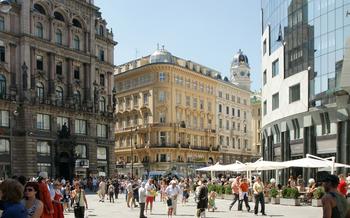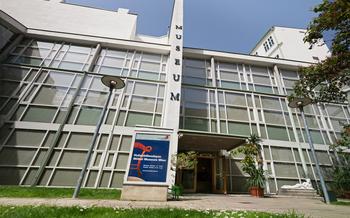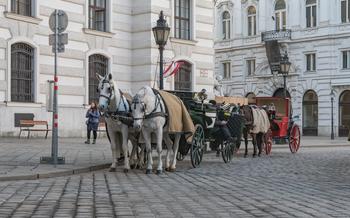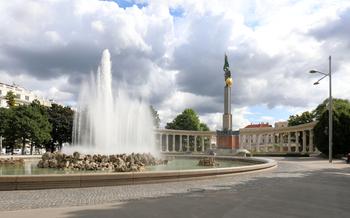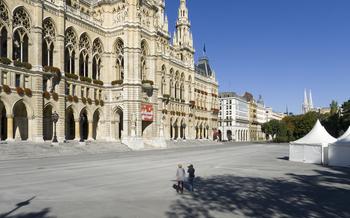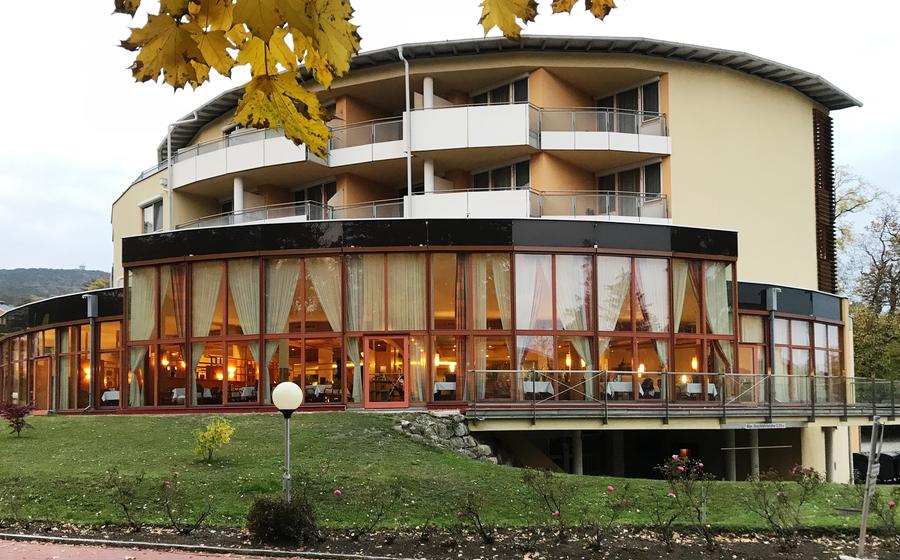
Karlskirche (St. Charles's Church), Vienna
- Karlskirche (St. Charles's Church): A Baroque Masterpiece
- History and Architecture: A Legacy of Devotion
- Interior Highlights: A Realm of Art and Devotion
- Karlskircheplatz: A Place of Serenity and Reflection
- Guided Tours: Unveiling the Secrets of Karlskirche
- Schönbrunn Palace: A Glimpse into Imperial Splendor
- Hofburg Palace: A Legacy of Power and Prestige
- MuseumsQuartier: A Cultural Oasis in the Heart of Vienna
- Naschmarkt: A Culinary Adventure
- Vienna State Opera: A Night of Enchantment
- Prater: A Thrilling Amusement Park
- Danube Island: A Leisurely Escape
- Zentralfriedhof: A Walk Through History
- Hundertwasserhaus: A Whimsical Creation
- Kahlenberg: Stunning Views and Hiking Trails
- Day Trips from Vienna: Exploring the Surrounding Region
- Hidden Gems of Vienna
Karlskirche (St. Charles's Church): A Baroque Masterpiece
History and Architecture: A Legacy of Devotion
Vienna's magnificent Karlskirche, or St. Charles's Church, stands as a testament to the city's rich history and Baroque architectural heritage. Conceived by Emperor Charles VI in 1713 as a votive offering for the end of a plague epidemic, the church's construction spanned over two decades, with Johann Bernhard Fischer von Erlach and his son, Joseph Emanuel, serving as its architects.
The Karlskirche's awe-inspiring façade is a symphony of Baroque elements, featuring two towering columns topped with intricate Corinthian capitals. The church's grand entrance is flanked by allegorical statues representing Faith, Hope, Charity, and Fortitude, each exuding a sense of strength and devotion. The imposing dome, a defining feature of the Karlskirche, rises majestically above the church, its intricate carvings and lantern adding to its grandeur.
Interior Highlights: A Realm of Art and Devotion
Stepping inside the Karlskirche is like entering a realm of artistic and spiritual wonders. The church's interior is a testament to the fusion of Baroque and Rococo styles, with lavish frescoes, ornate altars, and intricate sculptures adorning every corner. The ceiling frescoes, painted by Johann Michael Rottmayr, depict scenes from the life of St. Charles Borromeo, the church's patron saint, adding a celestial ambiance to the sacred space.
The Karlskirche boasts an impressive collection of altars, each dedicated to a different saint or theme. The high altar, a masterpiece of Baroque artistry, features a stunning depiction of the Assumption of the Virgin Mary, surrounded by angels and cherubs. Other notable altars include the Altar of St. John Nepomuk, with its intricate carvings and delicate sculptures, and the Altar of the Holy Family, showcasing a heartwarming scene of the Holy Family.
Karlskircheplatz: A Place of Serenity and Reflection
The Karlskirche is beautifully situated in the charming Karlskircheplatz, a tranquil square that invites moments of contemplation and serenity. The square is adorned with two graceful fountains, each featuring a bronze statue representing one of the four rivers of Paradise: the Tigris, Euphrates, Nile, and Ganges. The surrounding buildings, with their elegant facades and pastel colors, add to the harmonious ambiance of the square, creating a picturesque setting for this Baroque masterpiece.
Guided Tours: Unveiling the Secrets of Karlskirche
To fully appreciate the rich history and symbolism of the Karlskirche, guided tours are highly recommended. Knowledgeable guides lead visitors through the church's sacred spaces, sharing fascinating stories and insights about its construction, architecture, and artistic treasures. These tours offer a deeper understanding of the Karlskirche's significance as a symbol of devotion, a masterpiece of Baroque architecture, and an enduring landmark in Vienna's cultural and religious landscape.
Schönbrunn Palace: A Glimpse into Imperial Splendor
Schönbrunn Palace, a UNESCO World Heritage Site, stands as a testament to the grandeur and extravagance of the Habsburg dynasty. With its opulent halls, sprawling gardens, and rich history, this magnificent palace offers a glimpse into the lives of the Austrian monarchs who once called it home.
Imperial Apartments: Roam through the lavish Imperial Apartments, where the Habsburg emperors and empresses once resided. Admire the opulent décor, intricate furnishings, and personal artifacts that provide insights into their daily lives and tastes.
Gloriette: Ascend to the Gloriette hilltop pavilion, a stunning architectural masterpiece that offers panoramic vistas of the palace and its sprawling gardens. From this vantage point, soak in the beauty of the meticulously landscaped grounds, adorned with vibrant flower beds, cascading fountains, and majestic sculptures.
Privy Garden: Explore the Privy Garden, a secluded oasis nestled within the palace grounds. Stroll along manicured pathways, admire the exquisite sculptures and fountains, and lose yourself in the tranquility of the hedge maze, a symbol of imperial power and prestige.
Schönbrunn Zoo: Discover the oldest zoo in the world, located within the palace grounds. Encounter a diverse array of exotic animals from around the globe, including giant pandas, koalas, lions, tigers, and elephants. Marvel at the dedication and expertise of the zookeepers who provide exceptional care for these fascinating creatures.
Hofburg Palace: A Legacy of Power and Prestige
The Hofburg Palace, a sprawling complex in the heart of Vienna, stands as a testament to the power and prestige of the Habsburg dynasty. Once the imperial residence of the Habsburg emperors, this magnificent palace now houses a series of museums, institutions, and government offices.
Imperial Apartments:
Immerse yourself in the grandeur of the imperial apartments, where emperors and empresses once resided. These opulent rooms, adorned with elaborate furnishings, artwork, and crystal chandeliers, provide a glimpse into the lavish lifestyle of the Habsburgs.
Sisi Museum:
Delve into the fascinating life of Empress Elisabeth, also known as Sisi, through the Sisi Museum. Discover her personal belongings, including her gowns, jewelry, and travel diaries, which offer insights into her complex personality and tragic destiny.
Spanish Riding School:
Witness the elegance and precision of the world-famous Lipizzaner horses at the Spanish Riding School. These magnificent white horses perform graceful dressage movements in the stunning Winter Riding School, a Baroque masterpiece in itself.
Hofburg Chapel:
Marvel at the grandeur of the Hofburg Chapel, a stunning example of Baroque architecture. This sacred space, with its intricate frescoes, marble sculptures, and gilded altars, served as the private chapel of the Habsburg family.
MuseumsQuartier: A Cultural Oasis in the Heart of Vienna
In the heart of Vienna's vibrant cultural scene, the MuseumsQuartier stands as a testament to the city's rich artistic heritage. This sprawling complex, once the imperial stables, has been transformed into a vibrant hub of museums, exhibition spaces, and cultural institutions, offering a diverse range of experiences for art enthusiasts and visitors alike.
Museum of Modern Art (MUMOK)
The Museum of Modern Art (MUMOK) takes center stage in the MuseumsQuartier, showcasing a vast collection of modern and contemporary art from around the world. Housing works by renowned masters such as Pablo Picasso, Andy Warhol, and Roy Lichtenstein, MUMOK offers a comprehensive journey through the evolution of modern art.
Leopold Museum
The Leopold Museum focuses on Austrian art, with a particular emphasis on the works of Egon Schiele and Gustav Klimt. Schiele's expressive paintings and Klimt's iconic golden works offer a glimpse into the vibrant Viennese art scene of the early 20th century.
Kunsthalle Wien
The Kunsthalle Wien is a dynamic space dedicated to contemporary art, presenting a rotating program of exhibitions by emerging and established artists. From thought-provoking installations to cutting-edge performances, the Kunsthalle Wien pushes the boundaries of contemporary art.
Architekturzentrum Wien
For those interested in architecture, the Architekturzentrum Wien provides a comprehensive overview of the history and evolution of architecture, with a focus on Vienna. Through interactive exhibits and captivating displays, visitors can explore the architectural heritage of the city and gain insights into the latest trends in contemporary architecture.
Insider Tip:
To fully immerse yourself in the cultural atmosphere of the MuseumsQuartier, plan your visit during one of the many events, workshops, or guided tours offered throughout the year. From art talks and film screenings to family-friendly activities, there's always something new to discover at this vibrant cultural hub.
Naschmarkt: A Culinary Adventure
Naschmarkt is a bustling and vibrant market that is a must-visit for food lovers. With over 120 stalls and restaurants, there is something for everyone to enjoy.
Market Stalls:
The market stalls offer a vast array of fresh produce, spices, cheeses, and meats from all over the world. Visitors can find everything from exotic fruits and vegetables to traditional Austrian delicacies like smoked meats and cheeses.
Food Stands:
For those who are looking for a quick bite to eat, there are numerous food stands offering a variety of international cuisines. From traditional Austrian dishes like schnitzel and sausages to exotic street food from around the world, there are plenty of options to choose from.
Naschmarkt Flea Market:
Every Saturday, the Naschmarkt transforms into a flea market, where visitors can find unique treasures, vintage clothing, and antiques. The flea market is a great place to find one-of-a-kind items and souvenirs.
Restaurants:
For those who prefer to sit down and enjoy a meal, there are numerous restaurants and cafés lining the market. Visitors can sample Viennese and international cuisine in a variety of settings, from casual cafés to fine dining restaurants.
Insider Tip:
Be sure to try the Naschmarkt sandwich, a local delicacy made with smoked salmon, cream cheese, and chives, served on a fresh roll.
Vienna State Opera: A Night of Enchantment
Amidst the grandeur of Vienna's cultural scene, the Vienna State Opera stands as a beacon of musical excellence. This world-renowned opera house has played host to legendary performances and continues to captivate audiences with its exquisite productions. Whether you're an opera aficionado or simply seeking a magical evening, a night at the Vienna State Opera promises an unforgettable experience.
World-Class Performances
The Vienna State Opera's stage has witnessed some of the most iconic performances in opera history. From the soaring melodies of Mozart to the dramatic intensity of Verdi, the opera house has been graced by legendary singers, conductors, and musicians. The current season offers a diverse repertoire, from classic operas like "La Bohème" to contemporary works by renowned composers.
A Glimpse Behind the Scenes
Beyond the grand façade, the Vienna State Opera invites visitors to delve into its rich history and inner workings. Guided tours offer a fascinating glimpse behind the scenes, where you can explore the opulent auditorium, peek into the rehearsal rooms, and learn about the intricate technical aspects that bring each performance to life.
State Opera Museum
For a deeper dive into the world of opera, visit the Staatsopernmuseum, located within the opera house. This interactive museum showcases the history of the Vienna State Opera, from its grand opening in 1869 to its present-day status as one of the world's leading opera companies. Through exhibits, costumes, and multimedia displays, the museum brings the magic of opera to life.
Dress Code: A Touch of Elegance
A night at the Vienna State Opera is a special occasion, and the dress code reflects the grandeur of the setting. While there is no strict requirement, formal attire is customary, adding to the sense of occasion. Gentlemen are encouraged to wear a tuxedo or dark suit, while ladies can opt for an elegant evening gown or cocktail dress.
Prater: A Thrilling Amusement Park
Amidst the imperial grandeur of Vienna, lies a realm of excitement and adventure, the Prater amusement park. Step into this vibrant world and let your spirits soar as you embark on a thrilling journey filled with iconic landmarks, adrenaline-pumping rides, and family-friendly attractions.
Wiener Riesenrad: A Timeless Icon
Towering over the Prater, the Wiener Riesenrad, also known as the Giant Ferris Wheel, stands as an iconic symbol of Vienna. This majestic wheel, built in 1897, offers breathtaking panoramic views of the city and beyond. As you gently ascend in one of its 15 gondolas, prepare to be mesmerized by the stunning vistas that unfold before your eyes.
Prater Museum: A Journey Through Time
To delve deeper into the history and evolution of the Prater, visit the Prater Museum. This fascinating museum takes you on a journey through time, showcasing the transformation of the Prater from imperial hunting grounds to a beloved amusement park. Discover the stories and anecdotes that have shaped this iconic destination.
Roller Coasters: An Adrenaline Rush
For those seeking an adrenaline rush, the Prater offers an array of thrilling roller coasters that will leave your heart pounding. Experience the legendary "Praterturm," a towering steel coaster that takes you on a whirlwind of twists, turns, and drops. Hold on tight as you race through the air, feeling the wind in your hair and the excitement coursing through your veins.
Family-Friendly Attractions: Fun for All Ages
Families with children will delight in the Prater's abundance of family-friendly attractions. From gentle rides suitable for toddlers to exhilarating roller coasters for older kids, there's something for everyone. Explore the enchanting labyrinth of mirrors, take a spin on the vintage carousel, or let the little ones loose in the colorful playgrounds.
Danube Island: A Leisurely Escape
Amidst the bustling city of Vienna, Danube Island (Donauinsel) offers a tranquil oasis for relaxation and outdoor adventures. This 21-kilometer-long artificial island, situated in the middle of the Danube River, is a popular destination for locals and tourists alike.
Whether you seek a refreshing swim, a leisurely sunbathing session, or an exhilarating water sport experience, Danube Island has something for everyone. Take a dip in the cool waters of the Danube River or bask in the sun on the sandy beaches of Copa Cagrana, the island's most popular bathing area. For those seeking more active pursuits, Danube Island offers a variety of water sports facilities, including sailing, windsurfing, and kayaking.
After a day of fun in the sun, take a leisurely stroll through Donaupark, a tranquil park located at the northern end of the island. Admire the beautiful gardens, sculptures, and a charming Japanese teahouse. The park also features a playground, making it a great destination for families with children.
For a bird's-eye view of Vienna and the surrounding countryside, ascend the Danube Tower (Donauturm), a 252-meter-high observation tower located at the southern end of the island. The tower offers breathtaking panoramic views that stretch for miles.
Danube Island is easily accessible by public transportation, making it a convenient destination for visitors. With its diverse range of activities and stunning natural beauty, Danube Island is the perfect place to escape the hustle and bustle of city life and enjoy a relaxing day surrounded by nature.
Zentralfriedhof: A Walk Through History
Vienna's Zentralfriedhof, or Central Cemetery, is a vast and awe-inspiring necropolis that serves as the final resting place for some of the city's most famous and influential figures. This historic cemetery, established in 1874, is not only a place of mourning but also a treasure trove of art, history, and culture.
Strolling through the sprawling grounds of the Zentralfriedhof is like taking a walk through the annals of Viennese history. The graves of renowned composers such as Beethoven, Brahms, and Schubert, as well as those of artists like Gustav Klimt and Friedensreich Hundertwasser, can be found here. The cemetery is also home to the graves of historical figures, including Empress Elisabeth (Sisi), who was assassinated in 189
Beyond the graves of famous personalities, the Zentralfriedhof is also notable for its stunning Art Nouveau mausoleums and sculptures. These elaborate tombs, adorned with intricate carvings and colorful mosaics, are a testament to the artistic and architectural prowess of the era.
To fully appreciate the history and significance of the Zentralfriedhof, consider joining a guided tour. These tours provide insights into the lives and legacies of the individuals buried here, as well as the symbolism and iconography found throughout the cemetery.
One particularly poignant section of the Zentralfriedhof is the Jewish section, which contains the graves of prominent members of the Jewish community. This section serves as a reminder of the vibrant Jewish life that once existed in Vienna before the horrors of the Holocaust.
The Zentralfriedhof is not only a place of remembrance but also a place of beauty and tranquility. The vast grounds are dotted with lush gardens, mature trees, and serene ponds, creating an atmosphere of peace and reflection.
Whether you are a history buff, an art enthusiast, or simply someone who appreciates the beauty of a well-maintained cemetery, the Zentralfriedhof is a must-visit destination in Vienna.
Hundertwasserhaus: A Whimsical Creation
Nestled in the charming district of Landstraße, the Hundertwasserhaus stands as a testament to the boundless creativity and imagination of Friedensreich Hundertwasser, a renowned Austrian artist and architect. This unconventional building, completed in 1985, is a striking departure from traditional architecture, showcasing Hundertwasser's unique artistic vision and his commitment to creating living spaces that are both functional and aesthetically pleasing.
The Hundertwasserhaus is a symphony of colors, shapes, and textures, with its vibrant façade adorned with colorful tiles, irregular windows, and whimsical sculptures. The building's organic forms and undulating lines mimic the natural world, blurring the boundaries between architecture and nature. The rooftop garden, a lush oasis teeming with vegetation and sculptures, further enhances this connection to the natural world.
Visitors to the Hundertwasserhaus can delve deeper into the artist's life and work at the Hundertwasser Museum, located on the ground floor of the building. The museum showcases a diverse collection of Hundertwasser's paintings, drawings, and architectural models, providing insights into his creative process and artistic philosophy.
For those seeking unique souvenirs or gifts, the Hundertwasserhaus gift shop offers a variety of items inspired by the artist's work, including prints, postcards, books, and ceramics. These mementos serve as tangible reminders of the whimsical and imaginative world of Friedensreich Hundertwasser.
Kahlenberg: Stunning Views and Hiking Trails
Kahlenberg, a prominent hilltop in the Vienna Woods, offers a captivating blend of stunning panoramic views, serene hiking trails, and historical landmarks. Ascend to the summit and be rewarded with breathtaking vistas of Vienna and its picturesque surroundings. The Panoramablick, a viewing platform perched atop the hill, provides an unparalleled perspective of the city, the Danube River, and the distant Alps.
Embark on a leisurely hike through the lush forests of the Vienna Woods, starting from Kahlenberg. Choose from a network of well-marked trails that cater to hikers of all levels, meandering through tranquil valleys, past babbling brooks, and over gentle hills. Immerse yourself in the serene beauty of nature, surrounded by the vibrant greenery and fresh air.
Don't miss the Stefaniewarte, a historic observation tower that stands tall on Kahlenberg. Climb to its viewing platform for an even more elevated perspective, taking in the breathtaking panorama of Vienna and the surrounding countryside.
Extend your adventure to the nearby Cobenzl hill, which offers a delightful array of restaurants and cafés with panoramic views. Indulge in a delicious meal or a refreshing drink while enjoying the stunning vistas that stretch out before you.
Day Trips from Vienna: Exploring the Surrounding Region
Vienna serves as an ideal base for exploring the enchanting region surrounding the city. With its rich history and diverse landscapes, there are countless day trip opportunities that offer a glimpse into Austria's cultural and natural wonders.
One of the most popular destinations is Salzburg, the birthplace of Wolfgang Amadeus Mozart. Immerse yourself in the city's musical heritage by visiting Mozart's Geburtshaus, the house where he was born, and exploring the charming Old Town, a UNESCO World Heritage Site.
For a taste of Baroque architecture, head to Melk Abbey, a stunning Benedictine monastery perched on a hill overlooking the Danube River. The abbey's grand interiors and beautiful gardens are a testament to its rich history and artistic legacy.
Just a short hop across the border lies Bratislava, the capital of Slovakia. Discover the city's medieval heritage at Bratislava Castle, stroll through the vibrant Old Town, and sample the delicious local cuisine.
For a longer trip, consider venturing to Budapest, the captivating capital of Hungary. Admire the city's stunning architecture, including the Hungarian Parliament Building and Buda Castle, and relax in one of the many thermal baths.
Whether you prefer history, art, or nature, there's a day trip from Vienna that's sure to captivate your senses and leave you with lasting memories.
Hidden Gems of Vienna
Beyond the well-known attractions, Vienna offers a treasure trove of hidden gems waiting to be discovered. One such gem is Café Central, a historic coffee house that has been a meeting place for intellectuals, artists, and writers since the 19th century. Step inside to soak up the grandeur of the opulent interior and indulge in a traditional Viennese coffee and pastry while imagining the conversations that have taken place within these walls.
Another hidden gem is the Secession Building, an architectural masterpiece of the Art Nouveau movement. Admire the golden dome and intricate facade before stepping inside to explore the temporary art exhibitions that showcase contemporary and modern works.
For a unique shopping experience, head to the Naschmarkt Flea Market, held every Saturday. Browse through an eclectic mix of antiques, vintage clothing, and handmade crafts, and perhaps uncover a one-of-a-kind treasure to take home.
Finally, visit the Augarten Porcelain Manufactory, a historic factory that has been producing exquisite porcelain items since the 18th century. Take a tour of the factory to learn about the intricate process of porcelain making and admire the delicate hand-painted designs. You can also purchase some of the exquisite porcelain items as souvenirs of your trip to Vienna.
